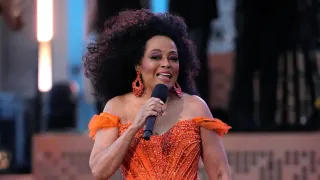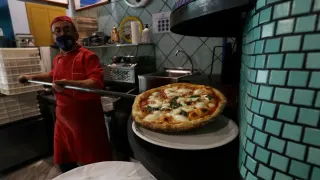February 19, 2024
New York Archdiocese Denounces Transgender Activist's Funeral, Holds Mass of Reparation
Brian P. D. Hannon READ TIME: 3 MIN.
The funeral of a renowned transgender activist in a New York cathedral elicited a denunciation of the event by a senior church official, who called the mass a scandal within one of the preeminent houses of worship in U.S. Catholicism.
The Roman Catholic Archdiocese of New York condemned the funeral of Cecilia Gentili, which was held in St. Patrick's Cathedral in Manhattan and drew a large audience on Thursday.
Gentili was known as a leading advocate for other transgender people, as well as sex workers and people with HIV. A post on her Instagram account announced her death on Feb. 6 at age 52.
In a written statement released Saturday, the Rev. Enrique Salvo, pastor of Saint Patrick's, thanked people he said had informed the church that they "share our outrage over the scandalous behavior" at the funeral.
"The Cathedral only knew that family and friends were requesting a funeral Mass for a Catholic, and had no idea our welcome and prayer would be degraded in such a sacrilegious and deceptive way," Salvo said in the statement.
The cathedral held a Mass of Reparation following the funeral at the direction of Cardinal Timothy Dolan, archbishop of New York, Salvo said.
"That such a scandal occurred at 'America's Parish Church' makes it worse; that it took place as Lent was beginning, the annual forty–day struggle with the forces of sin and darkness, is a potent reminder of how much we need the prayer, reparation, repentance, grace, and mercy to which this holy season invites us," he said.
A former sex worker who suffered addiction and was jailed at Rikers Island, she became a transgender health program coordinator, a nonprofit policy director for an established gay men's health organization, GMHC, and a lobbyist for health equality and anti-discrimination legislation, among other advocacy work.
Gentili founded the COIN Clinic, short for Cecilia's Occupational Inclusion Network, a free health program for sex workers through the Callen-Lorde community health organization in New York.
"New York's LGBTQ+ community has lost a champion in trans icon Cecilia Gentili," New York Gov. Kathy Hochul posted on X, formerly Twitter, following Gentili's death.
Gentili acted in the FX television series "Pose," about the underground ballroom dance scene in the 1980s and 1990s. She also performed two one-woman stage shows.
"I am an atheist, but I am always asking God for things," Gentili said in "Red Ink," her autobiographical show touching on topics including her childhood in Argentina and lack of religious faith.
St. Patrick's Cathedral, a Manhattan architectural and tourist landmark, has been the site of funerals for numerous prominent New Yorkers including Sen. Robert F. Kennedy, Babe Ruth and emergency responders who died in the Sept. 11, 2001, terrorist attack.
Videos of Gentili's funeral mass show an estimated audience of more than 1,000 celebrants, including transgender people and other friends and supporters chanting her name, applauding, singing and offering praise of her stature as a leading light of the city's LGBTQ+ community.
"Except on Easter Sunday we don't really have a crowd that is this well turned out," said Father Edward Dougherty, who presided over the mass.
Conservative group CatholicVote condemned fellow "Pose" actor Billy Porter, whose singing performance during the funeral was characterized by the group as a mockery of the "Our Father" prayer. "This is just unbelievable and sick," CatholicVote said on X.
In a statement before the song, Porter called Gentili a leader among "an entire community of people who transformed my life forever."
"Grief is singular, it's individual. Please know that however you grieve is what's right," Porter said. "There's no right or wrong way to grieve. But just make sure that you do, you allow yourself to do that, so that we can get to the other side of something that feels a little bit like grace."






